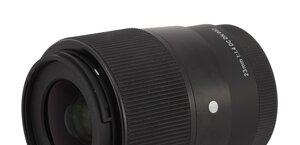Sony FE 200-600 mm f/5.6-6.3 G OSS
10. Autofocus and focus breathing
Autofocus
The autofocus performance of the Sony lens was tested with the help of the Sony A6400, the Sony A6700, the Sony A7R IIIa, and the Sony A7R V. In all cases the mechanism was noiseless. When it comes to the speed, the lens was the slowest with the autofocus set at FULL. In that case at the shortest focal lengths running through the whole distance range and confirming the focus took about 0.5 of a second; at the maximum focal length the time lengthened to almost 1 second.Still, using the focus limiter improves the comfort of work noticeably. Even at the longer focal lengths you are able to fit the range of 0.4-0.5 of a second. At the same time you should notice that the choice of 10 meters range limit seems sensible only for plane spotters or nature photographers specializing in big animals and birds of prey. If you like taking photos of smaller animals and birds you will find that the values around 6-8 meters are the most fitting.
The culture of work of the autofocus and its efficiency when joined with newer bodies such as the A7R or the A6700 is really high and here you find nothing to complain about. Still, I have had many opportunities to use the Sony 200-600 mm with an older, less advanced model, namely the Sony A6400 and here the situation wasn't so good anymore. The performance wasn't bad in good lighting conditions but when the light wasn't that bright the autofocus wavered, looking intensively for the proper position.
Please Support UsIf you enjoy our reviews and articles, and you want us to continue our work please, support our website by donating through PayPal. The funds are going to be used for paying our editorial team, renting servers, and equipping our testing studio; only that way we will be able to continue providing you interesting content for free. |
- - - - - - - - - - - - - - - - - - - - - - - - - - - - - - - - - - - - - - - - - - - - - - - -
Photos below show clearly that the tested lens didn't have any distinct problems with front or back focus tendencies.
| A7R IIIa, 300 mm, f/5.6 |
 |
| A7R IIIa, 600 mm, f/6.3 |
 |
Focus breathing
Focus breathing tests show reframing images as you oversharp them. We conduct the test by manually passing from the minimum focusing distance to infinity with the aperture stopped down; then we check how the field of view of the lens changed as a result.A frame change ranging from 0 to 5% we consider to be low. Between 5 and 10% you can speak about medium levels. Usually such values constitute also the maximum efficiency level of any breathing compensation algorithms, present in some bodies. Between 10 and 15% focus breathing is high, above 15% its level can be called very high.
The test video of the Sony lens is shown below:
Mind you our opinion is not a merely theoretical one. The Sony FE 200-600 mm f/5.6-6.3 G OSS is one of few lenses with a focal length over 200 mm that are offered by many video equipment rental shops.






